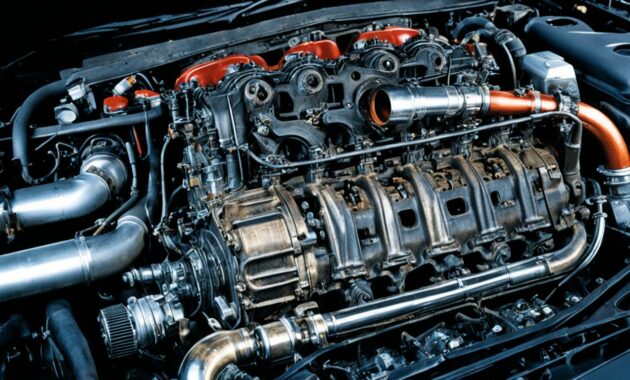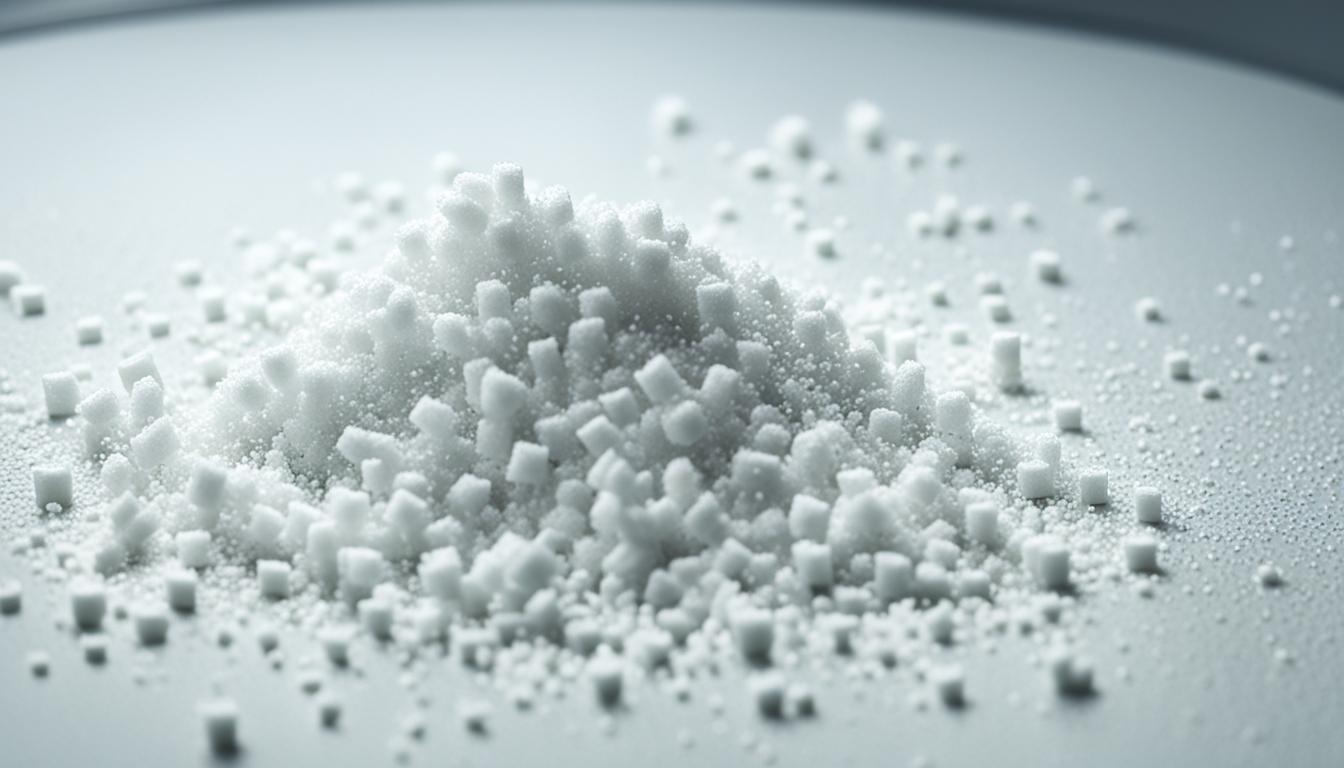Putting sugar in someone’s gas tank may sound like a harmless prank. However, it can lead to serious legal trouble. We will look into whether this act is a felony. And we’ll talk about what trouble you might get into for doing it.
If you put sugar in a gas tank, you could face charges like vandalism or property damage. The seriousness of these charges depends on the impact of the damage and where you are. Knowing the laws is key to understanding the risks.
We will also talk about the real damage sugar can cause to fuel systems. It’s not just about clogging up the works. Sugar can lead to engine problems that are really expensive to fix. And we’ll get into what trouble you could be in legally, which might include felony charges. We’ll look at different laws that might apply.
The Sweet Little Sins: The Truth About Sugar in a Gas Tank
Uncovering the Urban Legend of Sugar Stalling Engines
There’s a myth that putting sugar in a gas tank can stop an engine. This tale is widely spread. Yet, the reality is different than we’ve been told. Sugar doesn’t mix with gas. Instead, it falls to the tank’s bottom. There, it creates a thick layer. This layer can block the filter and harm the engine over time.
Adding sugar to gas sounds like a quick, fun trick. However, its damage is slow. You won’t see the problem until it’s too late. The car might not work well, without clear reasons. There could be strange sounds, less power, or it might stop running suddenly. It’s not a prank; it’s a harmful act.
The Real Effects of Sticky Substances on Fuel Systems
Not just sugar, but other sticky things like honey or syrup are also bad for cars. They block the fuel filter. This blockage stops gas from getting to the engine. Eventually, they can also mess up the fuel lines, pump, and other important parts. This leads to costly repairs.
These sticky substances hurt the engine too. They mess up how fuel mixes with air. This makes the engine run poorly. It can lose power or even stop working. So, putting any sticky stuff in the gas is a big problem.
Thinking sugar can harm a car quickly is a risky mistake. It seems innocent as a joke. But, the harm it causes is expensive and illegal. Knowing the truth about these myths is key. It helps avoid damage to cars and stops vandalism.
Is Putting Sugar in a Gas Tank a Felony? Understanding the Legal Repercussions
Pouring sugar in a gas tank is often seen as a harmless joke. However, it can lead to serious legal trouble. The outcome depends on the damage done and the property’s value.
In Texas, damaging property under $100 is a class C misdemeanor. It comes with a fine up to $500. Yet, if damages are between $100 and $750, it’s a class B misdemeanor. This can lead to 180 days in jail, or fines up to $2,000.
If the damage goes up to $2,500, it’s a class A misdemeanor. Those guilty might face a year in jail, or fines up to $4,000. Damage of $2,500 to $30,000 by a weapon is a state jail felony. It could mean 180 days to two years in jail, plus a fine of up to $10,000.
As damages rise above $30,000, the felony level increases. Damages up to $150,000 make it a third-degree felony. This could lead to 2 to 10 years in jail and a $10,000 fine.
If the damage is $150,000 to $300,000, it becomes a second-degree felony. The punishment is 2-20 years in prison and up to a $10,000 fine. More than $300,000 in damages makes it a first-degree felony. This carries a sentence of 5-99 years in prison and a $10,000 fine.
The laws about criminal mischief, property damage, and vandalism can differ from one place to another. Thinking about adding sugar to a gas tank? Consider the possible legal consequences of sugar in a gas tank. The effects could be serious and life-changing.
“Putting sugar in someone’s gas tank is not a harmless prank – it’s a form of criminal mischief that can result in serious legal consequences.”
The Bleach Catastrophe: Corrosive Consequences for Your Engine
Putting bleach in your gas tank is a harmful and malicious act. It can seriously destroy your car’s engine. Bleach’s chlorine and oxidizing features quickly eat away key engine parts. This can cause the whole fuel system to fail.
Bleach in the gas tank doesn’t just harm right away. It continues to damage your car’s fuel system over time. This damage includes rusting metal parts and making seals weaker. Overall, your engine’s performance will drop a lot.
Damage like this is usually covered by comprehensive car insurance. Yet, getting money back for repairs depends on your specific policy and deductible. This can affect how much of the costs you’ll have to pay.
Sabotaging a car with bleach could lead to criminal charges because it’s seen as vandalism. To prove someone added bleach to your tank on purpose, you need evidence. Working with the police can help find and charge the person responsible.
Even without seeing or smelling bleach in your fuel, you may notice your engine doesn’t work well. While a mix of bleach and gas doesn’t often lead to explosions, it can ruin your engine if enough time passes. This is very damaging and can be expensive to fix.
Putting bleach in a gas tank is a dangerous and costly act. It could ruin your engine and lead you to legal trouble. Make sure to protect your car from these harmful actions. If you think your vehicle has been tampered with, contact the police and your insurance company right away.
| Damage Caused by Bleach in Gas Tank | Consequences |
|---|---|
| Rusting of metal parts | Reduced engine performance, fuel system failure |
| Deterioration of seals and gaskets | Fuel leaks, engine stalling, and poor fuel efficiency |
| Corrosion of fuel system components | Catastrophic engine damage and complete system failure |

“Bleach in a gas tank can cause catastrophic damage to a vehicle’s engine if a sufficient amount is added and allowed to run through the fuel system for an extended period.”
Introducing bleach or similar harmful substances into a car’s fuel system is a severe offense. Such actions can have ongoing effects. Vehicle owners must protect their cars from harm and ask for help right away if they suspect foul play.
How to Destroy a Car Engine Undetected: The Surprising Power of Water
Why Water is Detrimental to Fuel Systems
Adding water to a gas tank can severely damage a car’s engine. Even a little water can start a chain of problems. This can end up with the engine detaching from its mount.
Water messes up the balance of the fuel mixture. It throws off the air and fuel ratio, making the engine run bad or stop. This issue can cause many more problems like lower performance and more fuel use. In the end, it could damage the engine.
- Water can corrode and harm parts like the fuel pump and injectors, needing expensive fixes.
- Water makes the fuel separate. This leads to a lack of the right fuel mix, causing the engine to misfire or even fail.
- Water freezing in fuel lines can block them, keeping the engine from starting.
Water in a gas tank can have serious effects on the engine and fuel system. It’s important to know how harmful water can be to avoid damage to your car.

“Putting water in a gas tank is a surefire way to cause major damage to a vehicle’s engine and fuel system. It’s not a harmless prank – it can lead to costly repairs and even complete engine failure.”
Knowing the risks and taking steps can protect your car. Recognizing water’s ability to harm your fuel system is key. This helps avoid tampering and keeps your vehicle safe.
From Childhood Pranks to Criminal Mischief: Navigating the Legal Landscape
Mischief can range from childhood pranks to criminal activities. It’s important to know the difference. This is vital, especially in areas where many people have guns.
Preventive Measures to Curb Mischievous Acts
Parents can prevent mischievous acts from turning into crimes. This includes criminal mischief, property damage, or vandalism. Here’s how:
- Encourage children to take part in sports, arts, or volunteer work. These activities use up their energy and curb mischief.
- Show children why they should respect others’ things. Also, make sure they understand what happens when they don’t.
- Open the doors for talks. Let children express their feelings and thoughts so you can deal with the root causes of mischief.
- Have clear rules and punishments. Follow through with these. This shows children that there are real consequences for their actions.
- Include children in solving problems and making decisions. This teaches them how their choices affect others.
Parents and guardians can stop childhood pranks from becoming crimes. By teaching kids to act responsibly, they can avoid criminal mischief and the legal trouble that comes with it.
“The true measure of a man is not how he behaves in moments of comfort and convenience, but how he stands at times of challenge and controversy.”
Understanding the laws around criminal mischief is tricky. But with early intervention and a focus on respect, kids can make smart choices. This helps them stay away from property damage or vandalism.
| Type of Offense | Potential Legal Consequences |
|---|---|
| Misdemeanor Criminal Mischief | Up to 1 year in jail and/or a fine of up to $1,000 |
| Felony Criminal Mischief | Imprisonment for 1-10 years and/or a fine of up to $10,000 |
By knowing the law and acting early, we promote a society where mischief is harmless. This keeps the line between childhood pranks and criminal mischief clear.
The Spectrum of Criminal Mischief: Misdemeanors to Felonies Explained
The consequences for criminal mischief can go from small misdemeanors to big felonies. This depends on the kind and size of the offense. It is vital to know this difference. It affects the kind of punishment you might get.
Minor offenses, like minor property damage, fall under misdemeanors. For example, doing something to someone else’s car. The person might pay a fine or spend a little time in jail. For major cases, when a lot of damage happens or if the action is severe, it could be a felony. Serious offenses can lead to more serious punishments. This is according to the laws of Nevada (look up NRS 202.350 and NRS 202.362).
The law looks at many things. It considers if someone meant to cause harm, the amount of damage done, and if anyone was put in danger. Knowing these details can help people understand the legal system better. Plus, it could help them prevent getting into serious trouble. This is true for both deliberate and accidental mischief.

